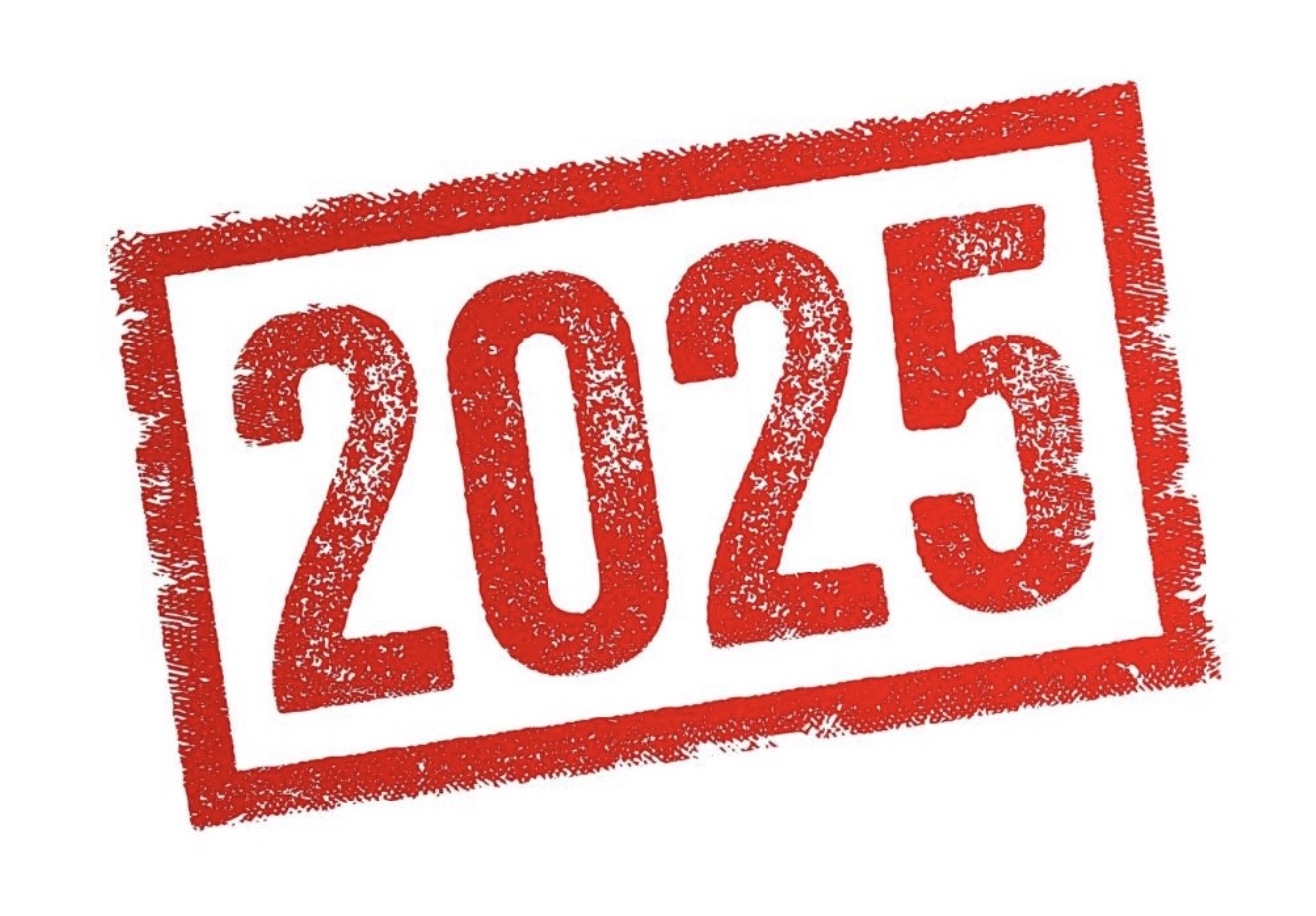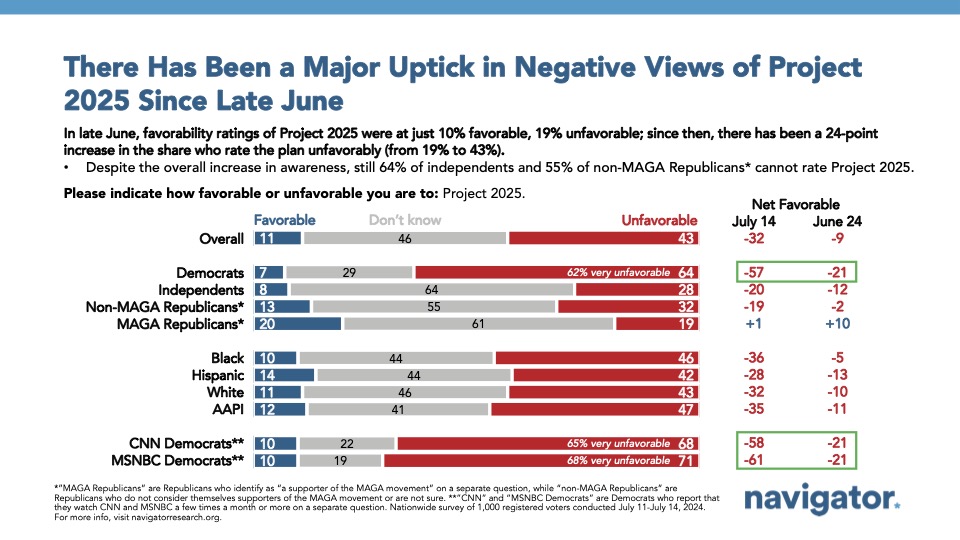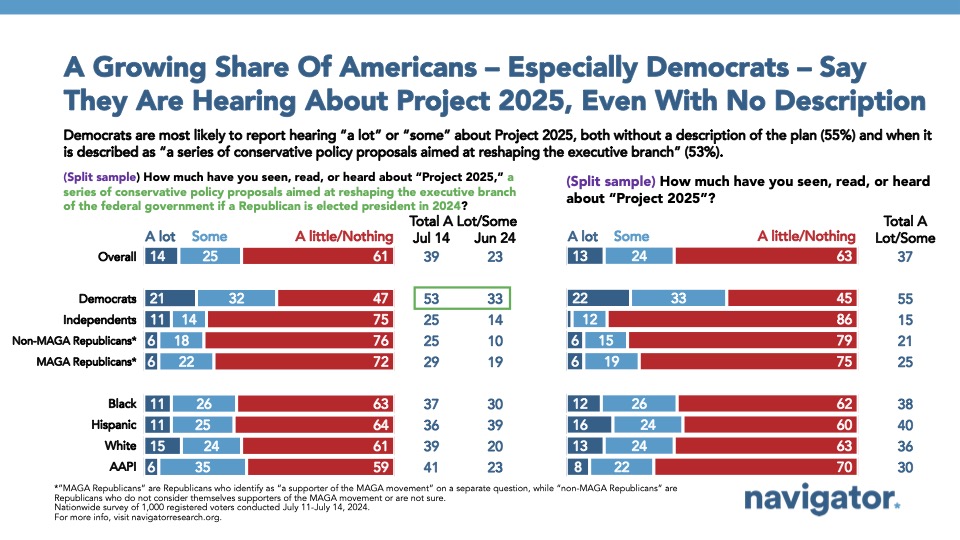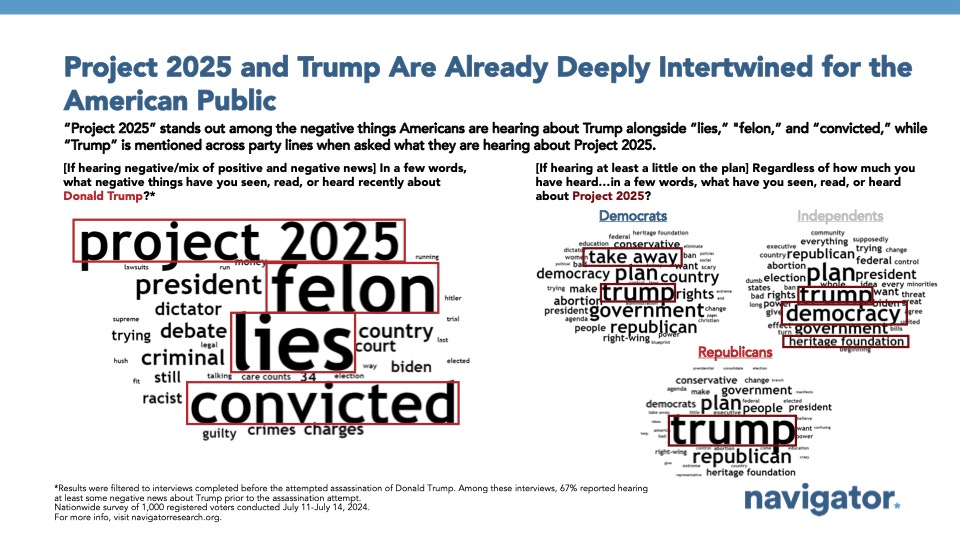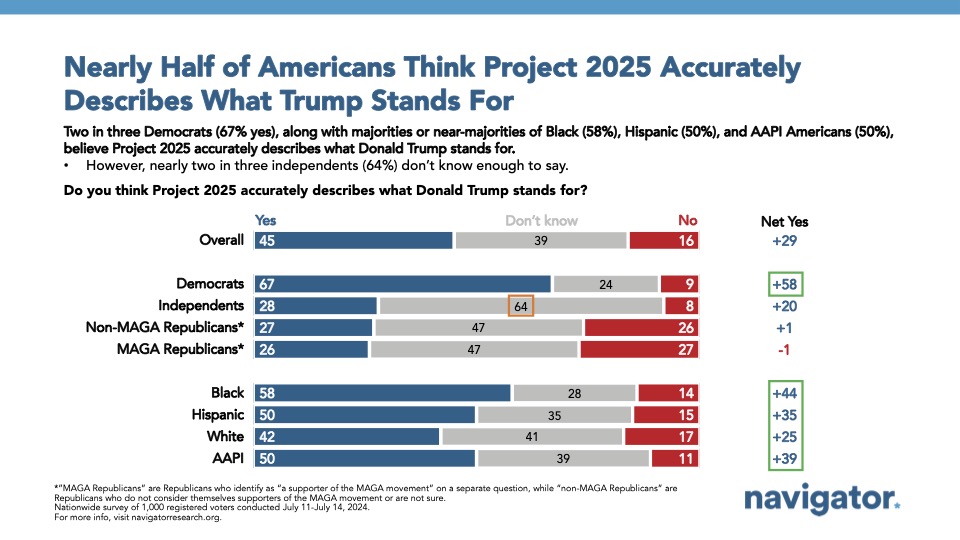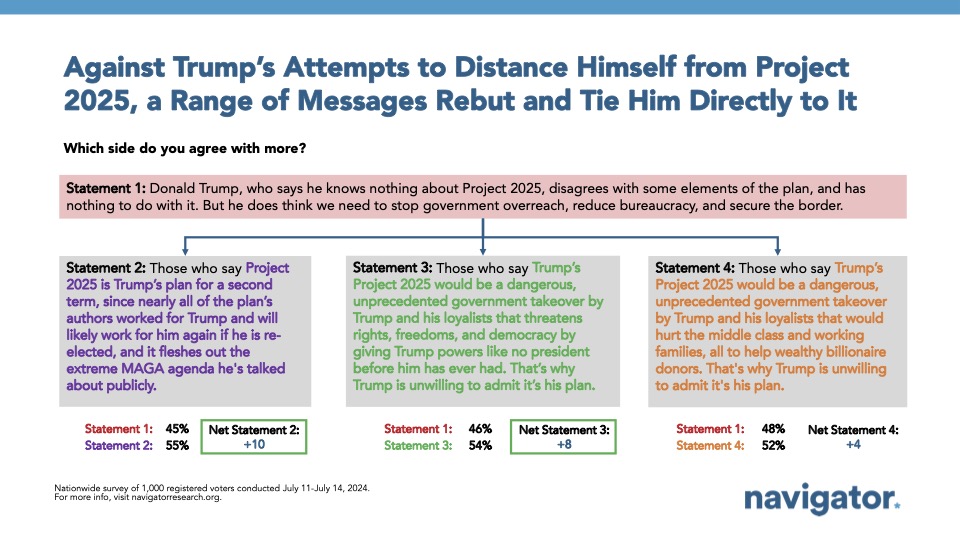Poll: Project 2025 & Former President Trump
This Navigator Research report contains polling data on the latest perceptions of Project 2025, including increased awareness and opposition to the plan, as well as messaging guidance for how to talk about Project 2025 after former President Trump tried to distance himself from it.
NOTE: More than 65% of the interviews conducted for this survey were completed before the attempted assassination of Donald Trump. Analysis was conducted to determine whether there were any significant response differences between interviews conducted before and after, of which there were none.
A majority of Americans are now hearing about Project 2025.
Project 2025 has seen a significant increase in both awareness and unfavorability since our last survey in June. 54 percent of Americans report being familiar with Project 2025, up 25 points since our last survey in late June. Among those familiar with the Project 2025, just 11 percent view it favorably, while 43 percent view it unfavorably, a 24 point increase in its unfavorable rating since last month.
- More than seven in ten Democrats are aware of Project 2025 (71 percent) and are overwhelmingly unfavorable toward it (net -57; 7 percent favorable – 64 percent unfavorable, with 62 percent very unfavorable).
- Independents hold net negative favorability ratings of Project 2025 (net -20; 8 percent favorable – 28 percent unfavorable), but nearly two in three still don’t know enough to have an opinion.
Almost half say Project 2025 accurately describes what Donald Trump stands for.
When people are asked what negative news they have heard recently concerning Donald Trump, mentions of Project 2025 have dramatically increased. Similarly, when asked to describe what they have seen, read, or heard about Project 2025, “Trump” emerges as a dominant theme in the responses across partisanship. Additionally, terms like “plan” and “Republican government” consistently appear in these open-ended responses.
- A plurality of Americans believe Project 2025 accurately represents what Trump stands for (net +29; 45 percent describes – 16 percent does not describe, with 39 percent saying they don’t know enough to say). Among independents, two in three are not sure whether Project 2025 aligns with Donald Trump’s principles (64 percent).
A range of responses are effective in rebutting Trump trying to distance himself from Project 2025.
In response to a Trump statement that he knows nothing about Project 2025, the following statements were effective counter arguments:
- Those who say Project 2025 is Trump’s plan for a second term, since nearly all of the plan’s authors worked for Trump and will likely work for him again if he is re-elected, and it fleshes out the extreme MAGA agenda he’s talked about publicly. (net +10; 55 percent agree with this statement more – 45 percent agree with Trump distancing himself more);
- Those who say Trump’s Project 2025 would be a dangerous, unprecedented government takeover by Trump and his loyalists that threatens rights, freedoms, and democracy by giving Trump powers like no president before him has ever had… that’s why Trump is unwilling to admit it’s his plan. (net +8; 54 percent agree with this statement more – 46 percent agree with Trump distancing himself more); and,
- Those who say Trump’s Project 2025 would be a dangerous, unprecedented government takeover by Trump and his loyalists that would hurt the middle class and working families, all to help wealthy billionaire donors… that’s why Trump is unwilling to admit it’s his plan (net +4; 52 percent agree with this statement more – 48 percent agree with Trump distancing himself more).
About The Study
Global Strategy Group conducted a public opinion survey among a sample of 1,000 registered voters from July 11-July 14, 2024. 100 additional interviews were conducted among Hispanic voters. 79 additional interviews were conducted among Asian American and Pacific Islander voters. 100 additional interviews were conducted among African American voters. 100 additional interviews were conducted among independent voters. The survey was conducted online, recruiting respondents from an opt-in online panel vendor. Respondents were verified against a voter file and special care was taken to ensure the demographic composition of our sample matched that of the national registered voter population across a variety of demographic variables. The margin of error for the full sample at the 95 percent level of confidence is +/- 3.1 percentage points. The margin for error for subgroups varies and is higher.
